This post may contain affiliate links. As an Amazon Associate I earn from qualifying purchases. Please read our disclosure policy.
Rouladen is German comfort food with interesting ingredients, is tasty as heck, and a hardy meal you should try today. If someone told me I was going to fall in love with beef rolled up with bacon, mustard, onion, and pickles, they would have been right, because I am.
This is such an interesting recipe and it really works great together. Serve this meal with a side of mashed potatoes and you have a full fledge German bonanza. Give our Rouladen recipe a try today!
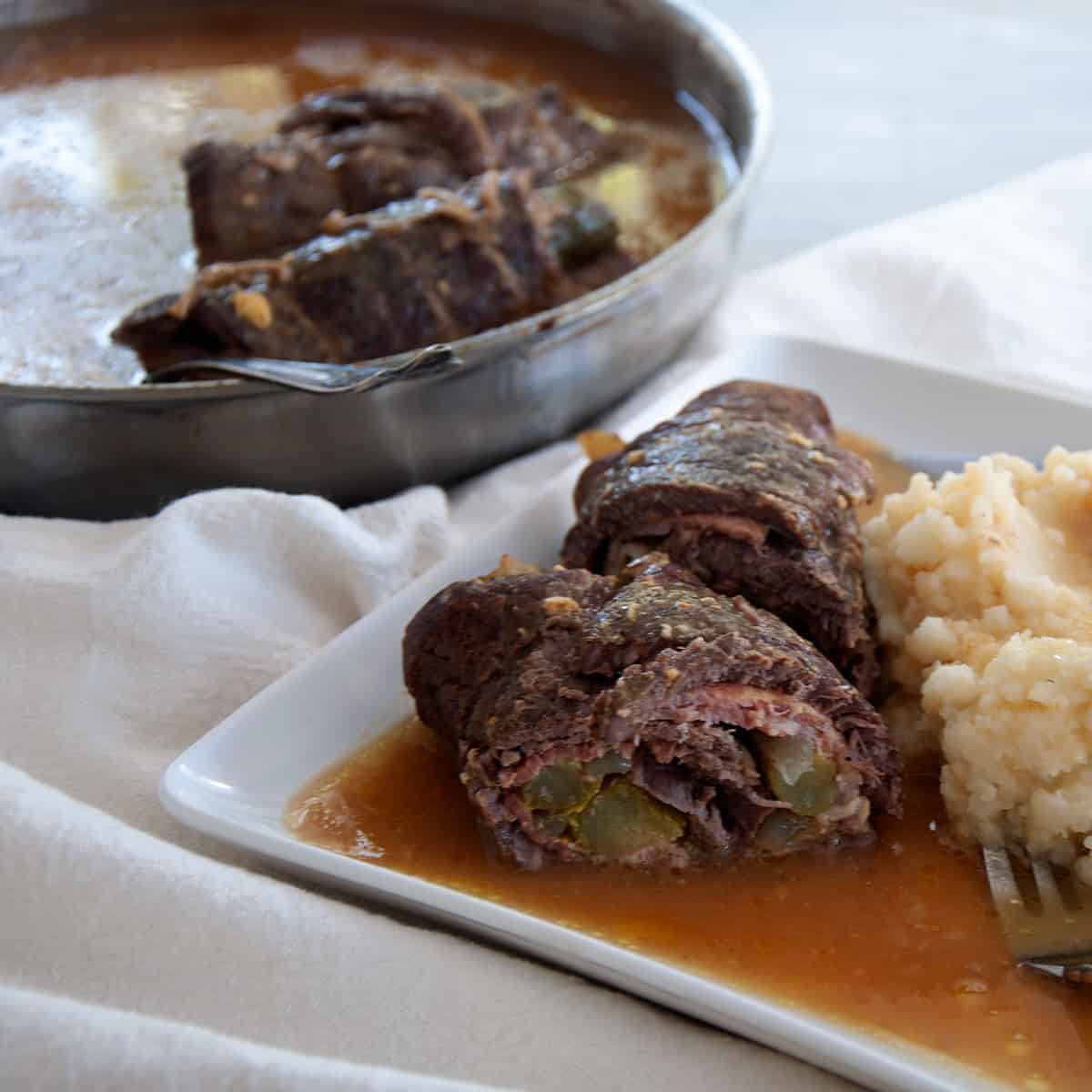
Rouladen Summary
It looks like it could be a complicated dish, but it really isn’t! It is simple and tasty. We just take some pieces of thinly sliced top round and lay them on a cutting board. After a little salt and pepper, we layer on mustard, onions, and pickles. Roll it up, tie it up, and cook.
First a quick browning on each side and then remove from the pan. We use the little crumbles left behind along with some butter, flour, and beef broth to make a roux and then a full-fledged gravy.
Add the Rouladen right back in the pan and simmer for an hour and a half! That is the short version and that should be all you need!
Choose The Right Beef
Probably the trickiest part of this recipe is getting the right cut of beef. We need thinly sliced top round beef that is cut against the grain. My first bit of advice is to just ask the butcher if they know what Rouladen is. They very well may. Meat is their business!
Your butcher should be able to cut you three (that is what our recipe calls for) thinly sliced, but longer, slices of top round. If they know what Rouladen is, they should be able to get there. If they don’t, describe what you need. Some folks use veal, but I choose top round for this recipe.
I have heard rumors that some stores have this cut of beef already sliced, vacuum sealed, and in the freezer. I have not seen this in the grocery stores I go to, but it might be worth checking your frozen meat section or asking your butcher.
If you need to cut it yourself, you can buy a roast, but you want to consider what you are making. You want a fairly decent size of beef that can be cut against the grain. It should be just under a quarter-inch thick. It should be about long enough to place a whole slice of bacon on.
Yes, you can do it yourself, but if you have a man behind the counter that can make the cuts for you, you are gong to be so much better off! You don’t have to spend as much on a whole roast, plus you don’t go through all the hassle of finding the right cut of beef. Talk to your butcher. There is a benefit in getting to know the man behind the counter.
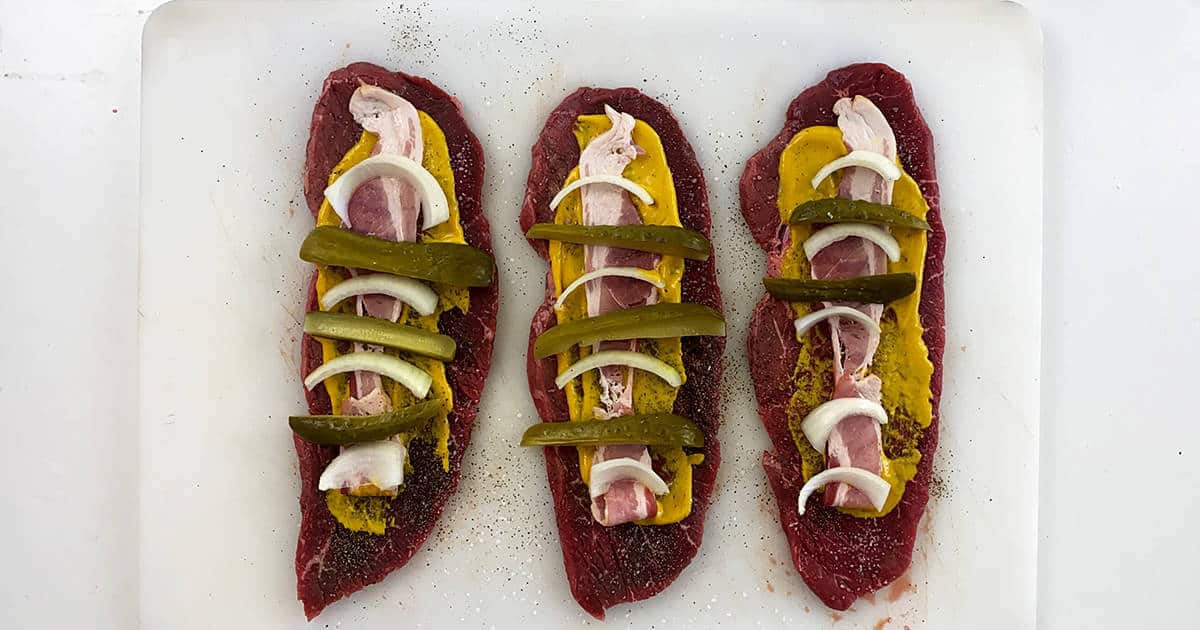
Another nuance to the beef that I think is worthwhile to point out is that some people advocate pounding out the beef. This could help tenderize the meat, but I don’t think it is necessary if you have the right cut and size of top round.
Choose the Right Mustard
Since this is a German dish, I would recommend using German mustard.
At the end of the day, use what you have and what you like. The flavor will translate a bit to the rest of the dish, so that is something to keep in mind when you cook this dish.
Choose the Right Pickles
This is another one where the flavor will end up impacting the rest of the dish. We generally use our homemade pickles that are cut into spears for this dish. Since this tends to be a cold-weather dish for me, we always have last Fall’s pickles around. Also, we mostly have spicy pickles, so that is what I tend to use.
Ultimately, use what you like, as the flavors will translate to the rest of the dish. I do recommend using spears, as they handle well and roll up into the Rouladen well.
Tie the Butchers Twine
Because this is a dish that is rolled up and handled, you must secure it in some way. For me, the best way to do this is with butcher’s twine. If you don’t have any, today might be the day to pick it up and you can find butcher’s twine here (AFFILIATE LINK).
It really is easy to just slide some twine under each roll and knot it up. Use scissors to clean up any excess twine, and you should be good to go. You can learn how to ties a butcher’s knot here, but for this I just have been using three basic square knots and cutting the ends.
Some people use toothpicks to keep the Rouladen together and this could work. I think my concern would be that if it falls apart, the game is over. You are more dealing in a beef and pickle stew at that point than a Rouladen recipe. If you use toothpicks, just be extra careful, but I would recommend picking up some butcher’s twine.
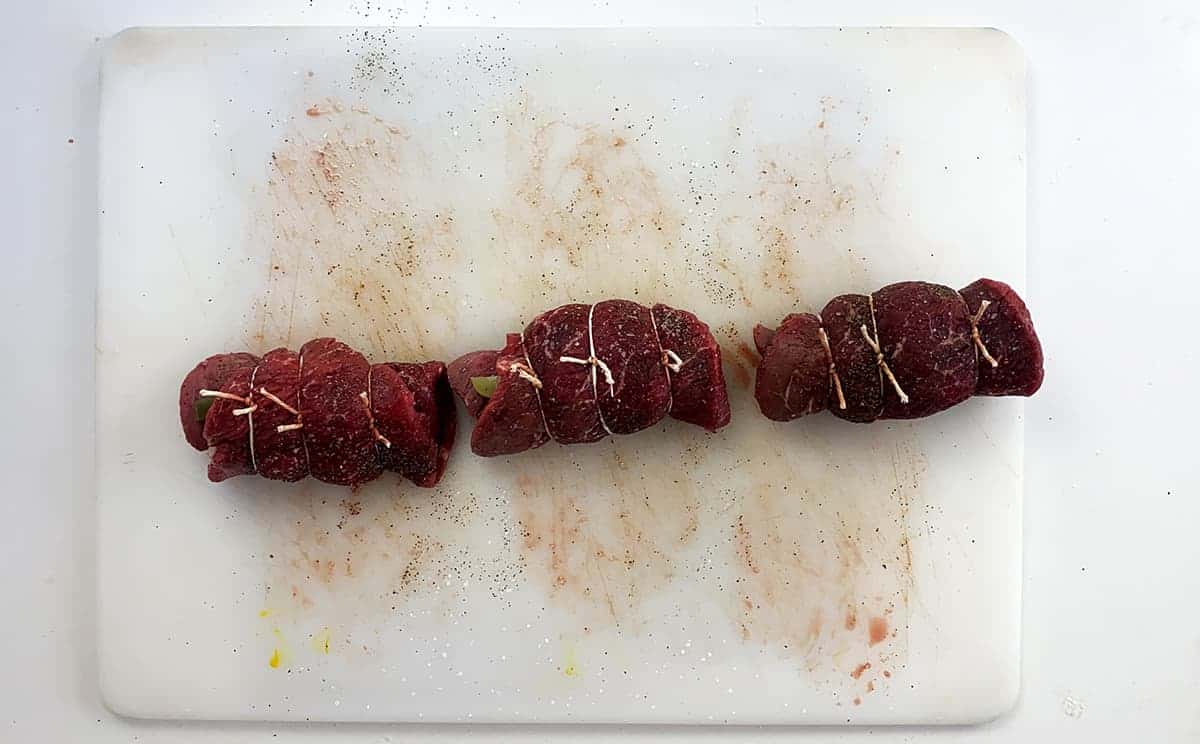
Making a Roux
The first step in the actual cooking process is to brown all sides of our tied up Rouladen. Not only will this help give a nice outer texture to the dish, but it will form the very base of our gravy. There will be little cooked beef bits at the bottom of our pan and that is good.
From there, we remove the rolls and make a roux. Add butter to the same pan you browned the Rouladen. Once melted, add the flour and mix in. This creates almost a paste and we will build our sauce with this as a base. Slowly add in our beef broth to this paste that is being heated and incorporate them.
You should really see a gravy start to form and that is what we want. Once all of the broth is fully incorporated, bring it to a simmer. It should thicken a bit. Next up, we begin the simmer.
Simmer, Simmer, Simmer
Once we have our Rouladen wrapped, browned, and the gravy made. Just bring your gravy to a simmer, add the Rouladen, and cover. Let it steep in itself for a good hour and a half. About halfway through the simmer, flip them over so that both sides have an equal amount of time on the gravy side.
This simmering period will help tenderize the beef and allow all of the flavors of the gravy and Rouladen to marry with each other. Once simmering is done, it is ready to serve! Cut the butcher’s twine off and you are ready to go.
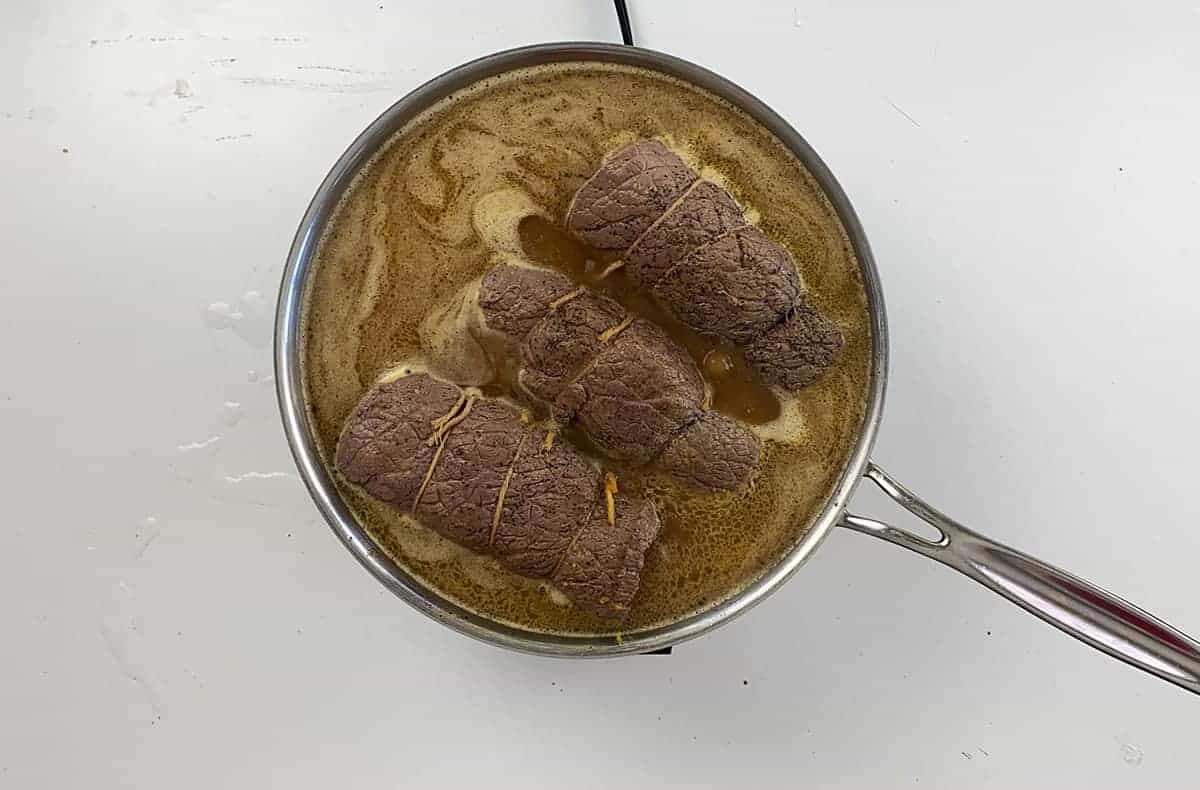
What to Serve With Rouladen
I think mashed potatoes is the obvious choice. There is more than enough gravy to cover a nice helping of mashed potatoes. Another great German sidedish that would go with this is a simple Spaetzle recipe. Other options include a nice pickled German Red Cabbage dish or coleslaw.
A bun or slice of buttered bread is great with this recipe. It is versatile and almost anything that might be served with a normal roast could be used here.
History and Origins of Rouladen
While I could not find a specific origin story, I do know that this is an old recipe that is based around rolling. Rouladen has origins in the French word Rouler, which translates to “to roll”. Originally, it was more about the rolling of meat rather than any specific ingredients, although beef seems to be shared among all recipes I found.
A Few Really Old Recipes
I found Rouladen recipes going as far back as the 1800s. One is from a 1838 and rolls a menagerie of ingredients (tendons, lemon peels, shallots, bread, eggs) into thin slices of veal. This old recipe comes from “Stettiner Koch-Book – Instructions for Cooking, Baking, and Canning in a Fine and Tasty Way”. What a fantastic name.
Another recipe from the turn of the century showed up for me from a book named “Practical Cookbook for Germans in America.” While this book is also in German, it shows that the recipe migrated from Germany to the US pretty early on. In my area, we have quite a bit of German ancestory and that might be part of the reason my butcher knows what Rouladen cuts of meat are.
Neither of these recipes look like what we call Rouladen today, but they do all include rolling up beef, assorted goodies rolled up into that beef, and then simmering for a long period of time.
The 20th Century
By about the 1960s, I start to see recipes that look very similar to the Rouladen we have today. Pickles and mustard become the standard. While I think that in the 1800s, it was more a general term for rolling beef up with other ingredients. It seems that in the first half of the 1900s this becomes more defined and the ‘standard’ recipe is more closely associated with mustard, pickles, and some kind of pork product in the center.
Like many recipes in history, it was designed to use all the tidbits a person might have available to sustain a family. Also like other recipes in history, it appears to have become sharpened to a more specific recipe that we know today rather than a multi-use recipe.
Tips For Making This Recipe
- Talk to your butcher about cutting thin slices of top round beef for your Rouladen.
- Use butcher’s twine if at all possible, but some people use toothpicks to keep their rolls together. The risk of using toothpicks is that your rolls may fall apart if they don’t hold.
- Brown each side before simmering.
- You could use more all-purpose-flour if you prefer a thicker gravy.
- The kind of pickles and mustard you use will impact your final flavor. Use what you like.
- I have frozen this recipe for later use and it has worked out just fine.
- My recipe calls for about 1 ½ pounds of beef. While it seems natural for each roll to be one full serving, that is quite a bit of meat for a serving, so I chose to make ½ a roll a complete serving. Use your discretion.
- This recipe is great with a side of mashed potato and buttered bread.
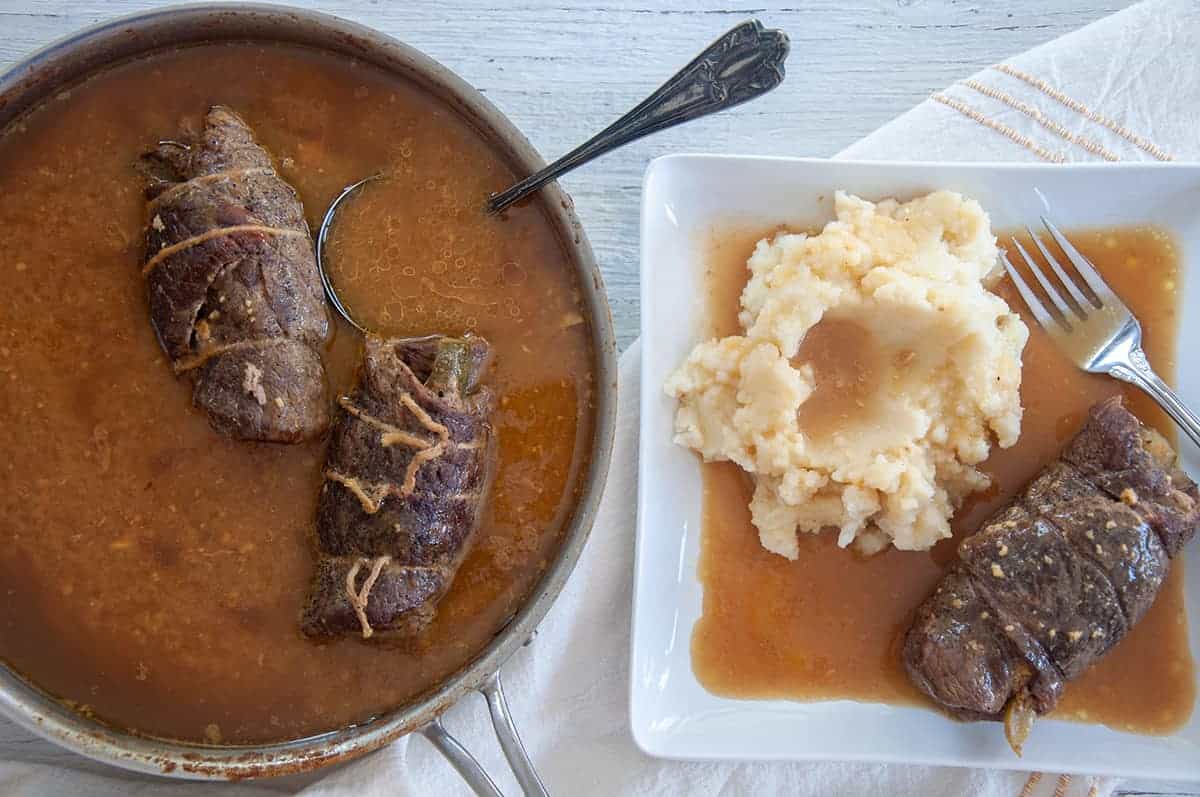
Products I Used In This Recipe
Did You Make This Recipe?
I am so glad you gave it a try! Find some other of our German recipes here. This was really a fun recipe to explore with great flavors that truly is a unique combination. If you tried it, I would love for you to leave a comment below telling us how it went. Leave a rating and let us all know how it went. Of course, I would love for you to share this with your friends and followers on Pinterest and Facebook. Most of all, THANK YOU so much for giving it a try and visiting our site.
Print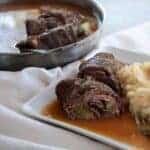
Rouladen Recipe – German Beef Rolls
- Prep Time: 20 minutes
- Cook Time: 1 hour 45 minutes
- Total Time: 2 hours 5 minutes
- Yield: 3 Rouladen
- Category: Dinner
- Method: Stovetop
- Cuisine: German
Description
Rouladen is a traditional German dish that is truly unique and you should give a try today. Beef rolled up with bacon, mustard, pickles, and then simmered in a delicious gravy. Serve this delightful comfort food with a side of mashed potatoes and you will be very happy you gave this a try.
Ingredients
- 1 ½ Pounds of thinly sliced top round beef roast
- Salt and pepper
- 6 Tablespoons mustard
- 3 slices of bacon, or more if needed
- ½ onion, sliced
- 6 Dill pickles spears
- 4 Tablespoons butter
- ¼ cup all-purpose flour
- 1 quart beef stock
Instructions
- Lay meat out. Salt and pepper both sides.
- Spread mustard over one side of laid out meat
- Lay a strip of bacon for each slice, but leave 3 inches at the end of each slice.
- Add Onion
- Add Pickle
- Tie three threads per roll
- Brown each side
- Add butter and make roux with flour
- Slowly add beef broth
- Bring to simmer to thicken
- Turn to medium-low
- Re-add rouledan
- Cover and simmer for 1.5 hours
- Remove and serve. Add Gravy to taste.
Notes
- Talk to your butcher about cutting thin slices of top round beef for your Rouladen.
- Use butcher’s twine if at all possible, but some people use toothpicks to keep their rolls together. The risk of using toothpicks is that your rolls may fall apart if they don’t hold.
- Brown each side before simmering.
- You could use more all-purpose-flour if you prefer a thicker gravy.
- The kind of pickles and mustard you use will impact your final flavor. Use what you like.
- I have frozen this recipe for later use and it has worked out just fine.
- My recipe calls for about 1 ½ pounds of beef. While it seems natural for each roll to be one full serving, that is quite a bit of meat for a serving, so I chose to make ½ a roll a complete serving. Use your discretion.
- This recipe is great with a side of mashed potato and buttered bread.
Nutrition
- Serving Size: 1/2 Rouladen
- Calories: 289 Calories
- Sugar: 1 g
- Sodium: 1015 mg
- Fat: 17 g
- Saturated Fat: 8 g
- Unsaturated Fat: 9 g
- Carbohydrates: 5 g
- Fiber: 1 g
- Protein: 26 g
- Cholesterol: 95 mg







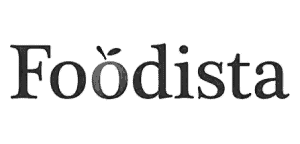


They are looking amazing! Rouladen one of my favorite German reicpes and this recipe just sounds like the one my grandma used to make. Greetings form Munich, JulesJ
I can’t wait to try your rouladen recipe. My grandmother who was 83, used to make these for us for family dinner. They were also wonderful. She used to put hers in tomato soup as the base to simmer the rouladen in, and put a hard boiled egg, pickle and bacon in hers. They were oh so good! 😊 Thank you for the recipe! Thank you for the history about German food.
This is a nice recipe my friend! I love these old school dishes and the flavours here are all on point. Just takes a bit of time but well worth it, especially during the cold months! Love to hear the history behind the dish.
Keep EM coming! 🤙